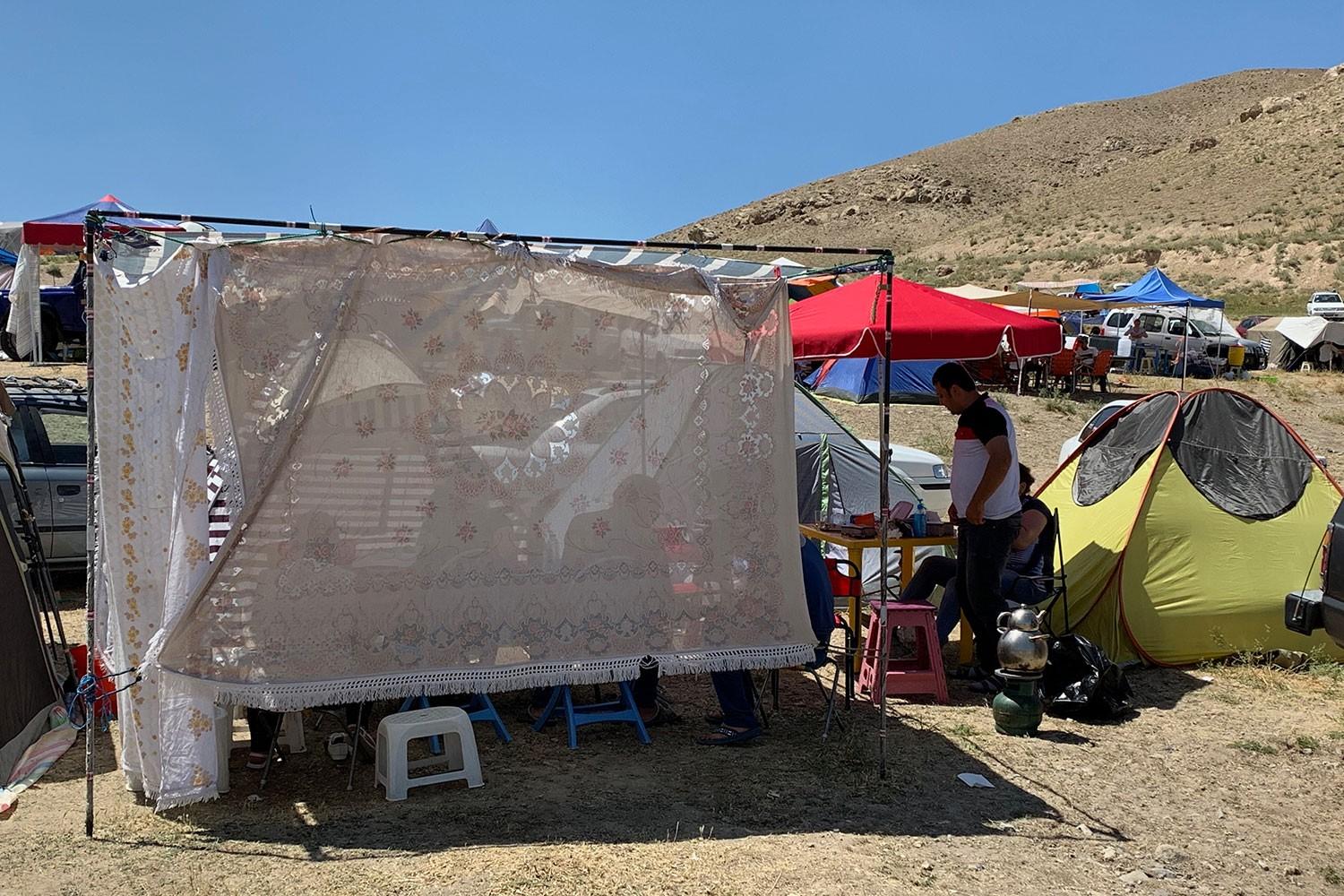
Iran’s St. Thaddeus Monastery Pilgrimage: 65-Year-Old Annual Event Seeks Inclusion in UNESCO’s Intangible Cultural Heritage List
The asphalted highway bends towards the Iranian village of Gharakilisa, in the country’s province of West Azerbaijan, and then disappears in surrounding mountains.
The road leads to the Armenian Apostolic St. Thaddeus Monastery, a pilgrimage site for Armenians from Iran and further afield for the past 65 years.
The hundreds of colorful tents are a sign that the annual three- day pilgrimage has again commenced at the site, where legend says a church dedicated to the Apostle Thaddeus was first built in 66 A.D.
It is something of a trek to get here. St. Thaddeus, also know as the Ghara Kilise (Black Church) is located in the province’s Chaldoran District, seven km northeast of the sleepy town of Seyah Chesmah.
Armenian pilgrims from the Iranian towns of Isfahan, Tehran, Tabriz and Urmia make the trek each year, staying in tents for three days.
The monastery and the surrounding lands resemble an Armenian oasis, cloistered from the outside world and its conventions. People laugh and sing in Armenian, women walk around showing their face and hair, and there’s an assortment of alcoholic beverages to be savored.
The celebrations are monitored by staffers of Iran’s Special Services. They are tasked with ensuring the safety of the country’s largest Christian minority.
The pilgrimage has become a rite of passage for Armenians of Iran. It’s on their “to do list”. It’s a chance to meet old friends, make new ones, to share communal bonds through music, dance and song.
The pilgrims believe that every request made of St. Thaddeus is realized.
Sherly Avedian, the Armenian coordinator of Iranian historical churches at the Iranian Cultural Heritage, Tourism and Crafts Authority, has drafted a proposal to have the pilgrimage included in the UNESCO Intangible Cultural Heritage List. UNESCO will announce its decision next year. Avedian is more than certain that it will be registered as an intangible value.
In July 2008, the Monastery of Saint Thaddeus was added to UNESCO's World Heritage List, along with two other Armenian monuments in the same province: The Monastery of Saint Stepanos and the Chapel of Dzordzor.
A file package to have the Holy Savior Armenian Church in Isfahan registered as a UNESCO Cultural Site has already been drafted and sent.
When the first group of pilgrims came here in 1954 there was no road, no infrastructure, and no transportation. Photos of pilgrims riding mules are kept in the archives.
Bishop Grigor Chitjyan, Primate of Atrpatakan Armenian Diocese, told Hetq that one of his predecessors, Archbishop Nerses Melik-Tangyan sent a few people to St. Thaddeus to inspect the site. Those first modern-day visitors recorded that there was almost nothing left from the monastery. They collected the remains of human bones and buried them. The monastery’s former glory had long since faded.
Finally, in 1954, the Atrpatakan Diocese decided to give importance to the spiritual centers in the mountains, and they launched the pilgrimage in conjunction with the diocesan council. There was no road to the monastery, only stone markers. That’s how the pilgrimage began.
"The three-day pilgrimage is a way to emphasize the importance of the monastery, especially the St. Thaddeus Monastery, which is the birthplace of our faith," says Bishop Chitjyan. "This is unique for today. Who has a three-day pilgrimage?"
The St. Thaddeus monastery has been renovated several times. Little remains of the monastery's original structure, as it was extensively rebuilt after an earthquake damaged it in 1319.
More renovations are underway today. The dome of the church was repaired the last time, and today Bishop Chitjian anointed the monastery’s new door, which was made to resemble the original one.
The pilgrimage ends tomorrow with a celebration of the Divine Liturgy.
The tents will be taken down and the pilgrims will go home.
The monastery will revert to its normal activity, that of accepting the curious adherents of Islam, whose presence in Armenian churches is forbidden during mass and other religious services.
 Videos
Videos Photos
Photos




















Write a comment